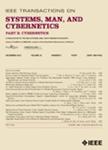版权所有:内蒙古大学图书馆 技术提供:维普资讯• 智图
内蒙古自治区呼和浩特市赛罕区大学西街235号 邮编: 010021

作者机构:Southern Univ Sci & Technol Dept Comp Sci & Engn Shenzhen 518055 Peoples R China Univ Chinese Acad Sci Sch Engn Sci Beijing 101408 Peoples R China Youtu Lab Tencent Shenzhen 518040 Peoples R China Westlake Univ Sch Engn Hangzhou 310030 Peoples R China
出 版 物:《IEEE TRANSACTIONS ON CYBERNETICS》 (IEEE Trans. Cybern.)
年 卷 期:2024年第54卷第5期
页 面:2720-2733页
核心收录:
学科分类:0808[工学-电气工程] 08[工学] 0811[工学-控制科学与工程] 0812[工学-计算机科学与技术(可授工学、理学学位)]
基 金:National Natural Science Foundation of China
主 题:Benchmark testing Training Noise measurement Image reconstruction Feature extraction Inference algorithms Anomaly detection instance segmentation unsupervised learning
摘 要:Image anomaly detection (IAD) is an emerging and vital computer vision task in industrial manufacturing (IM). Recently, many advanced algorithms have been reported, but their performance deviates considerably with various IM settings. We realize that the lack of a uniform IM benchmark is hindering the development and usage of IAD methods in real-world applications. In addition, it is difficult for researchers to analyze IAD algorithms without a uniform benchmark. To solve this problem, we propose a uniform IM benchmark, for the first time, to assess how well these algorithms perform, which includes various levels of supervision (unsupervised versus fully supervised), learning paradigms (few-shot, continual and noisy label), and efficiency (memory usage and inference speed). Then, we construct a comprehensive IAD benchmark (IM-IAD), which includes 19 algorithms on seven major datasets with a uniform setting. Extensive experiments (17 017 total) on IM-IAD provide in-depth insights into IAD algorithm redesign or selection. Moreover, the proposed IM-IAD benchmark challenges existing algorithms and suggests future research directions.